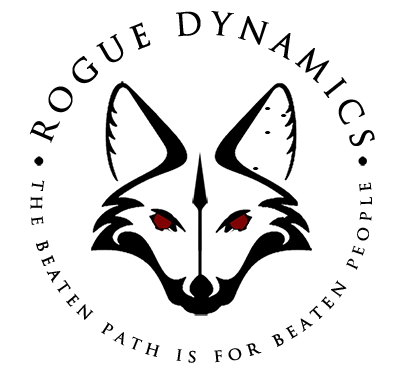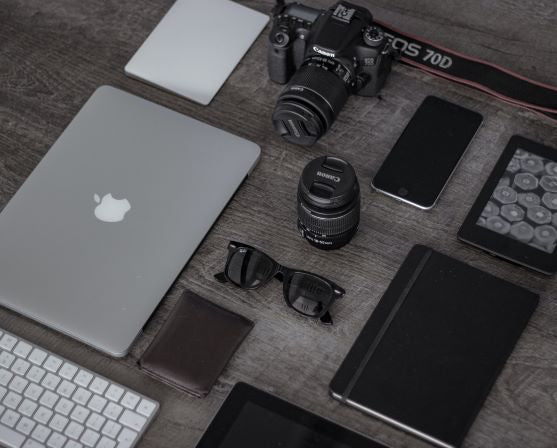
EDGED WEAPON OVERVIEW (EWO) REVIEW
A couple of years ago the Chief Deputy of Oconee county hosted a small training course, a sort of testing of class content prior to presenting it before a large group of LEO professionals. After the course he asked for honest feedback. I gave him a honest heartfelt review, pointing out what I felt were flaws or poor training practices. He took my constructive criticism well, and then countered, inviting me to a class he was hosting; the guest instructor was Mr Craig Douglas and the class was ECQC. ECQC is Craig’s answer to gaining in fight access to a handgun and then how to employ that handgun to end the fight in your favor. ECQC was my first introduction to ShivWorks in general and Craig Douglas in particular. I walked away from the course with the opinion that Mr Douglas teaches the best self-defense handgun course available. I took away the need to develop a better ground game and better fitness in general.

Two Years later….. I had picked up a jits habit and even gotten to play a little Modern Blade Concepts from the Micheal Janich school of thought. I remembered from a while back that Craig was coming back to the Atlanta area at some point in November so I got busy with the Google machine and found that Caliber Training was hosting Mr Douglas for his Edged Weapon Overview. EWO is the knife centric companion to his ECQC course. I signed up last minute thanks to Caliber being very gracious. So I was now monetarily committed to two days of full contact knife training with Craig Douglas, oh joy…
Day 1, The course was hosted by Elite Edge, a great full range gym located right off Peachtree Industrial just inside of the perimeter. Jason of Elite Edge was very welcoming and went out of his way to make the class a great success from a location stand point. The class started out with much of the same content as ECQC, Craig welcomes the students and starts off with a short bio, (LEO, UC, NARC, SWAT, US Army, in case you were wondering) and then has the typical round robin of students giving their names and some short background. The first part of class is lecture based. Craig goes over his observations from his time as an undercover narcotics agent and the most common methods and situations criminals use to make an assault on civilian’s. He uses the term Criminal Assault Paradigm to explain his ideas, that a criminal is only looking for an easy score, with few witness and in the easiest method possible. Typically, that means that the location has to support a criminal assault, that the attacker is armed (as it makes getting the score easier) and that if at all possible that the criminal element be more numerous than the intended target(s). Criminals will try to seize the momentum of the encounter and maintain the initiative, forcing the victim to respond to their actions. As the supposed victim, by giving up the initiative of the encounter you are thereby playing into the criminal’s hands.
We also talked about tells, what most criminals do when starting a verbal encounter that they intend to turn into a criminal one. Such things as “grooming habits”, scanning the area for other threats or cops, touching weapons hidden by clothing and then a weight shift. These are all things that can give away the intentions of a possible criminal who intends to assault you. By recognizing these, you, the defender know what is coming. You are taking the initiative of the encounter away from the perpetrator of the criminal act. By recognizing these unconscious actions, you can also choose your next actions more carefully, do I run? Do I try to verbally disengage, prepare to draw a weapon? In the military this would be something that we would lay at the feet of the METT-TC gods, in other words, it just depends. But at least now you know that storm clouds are brewing and you have some small amount of time to change the outcome in your favor.
All of the above and more are rolled into what Craig calls MUC, or Managing Unknown Contacts. While going through the MUC portion of the class we broke into pairs and practiced our verbal sparring and identifying the tells that the partner was feeding us. Yes, it is canned, yes it is slow and jerky and maybe not realistic; however, you still need to develop, tailor and then employ the verbal playlist to maintain special separation and also to train your eyes to catch the movements of the hands, eyes, feet and hips of the possible opponent. Better to do that in a training class than at 0200 in Little Five when it may matter. Anything that you can do to verbally defuse the situation and make an exit is worth doing. The next part of the class demonstrates inarguably that anywhere is better to be than in a knife fight.
The following block of instruction focused on actual contact, that of preventing being seriously and permeant hurt by an attacker, and maybe being able to dissuade that attacker from pressing the matter. Craig takes his standing grapping from Greco-Roman wrestling that any High School wrestler would recognize. Craig likes standing grappling as a tool to prevent the attacker from being able to connect with power in hitting and to prevent him or her from accessing a weapon from the waist area. Craig has two rules in a fight, stay conscious and stay mobile; everything else is a secondary concern. He uses the Greco-Roman wrestling techniques to clench with the opponent and prevent clean shots from the opponent that could violate his “Stay Conscious” rule. He also likes the clench to allow in fight access to weapons, be that a handgun like his ECQC teaches or a knife like the EWO.

This completed day one and rolled right into day two with a warmup involving accessing a knife from inside a clench, done slow and methodical; or as Craig likes to say, non-competitive and technical. Day 2 was the start of maintaining distance. A clench is no place to play with knives kids. Craig’s method of maintaining distance in a knife fight is reminiscent of fencing if using a tip up grip position, and a boxers jab if holding the knife in the tip down position. In either positon the goal is to make quick explosive jabs with shoulder rotation and hip twist to maximize the strike range while at the same time recoiling to beyond that of your opponents strike range. After drilling this for a few hours we did a force on force training evolution at about 75% with FAST helmets and NOK knives to get the feel of a good strike. Aggression was key here, deciding to get aggressive enough fast enough carried the evolution, those who were leery in their closing to strike ended up on the hind foot of the evolution, being herded around the thunder dome while the aggressive partner hammered home blows.
The final block of instruction with Craig was a variation on a theme, we had covered created distance with the jabs and now went over methods to maintain that distance through hand and arm cuts with the four main holds on the knife, Tip Up Edge In, Tip Up Edge Out, Tip Down Edge In, and Tip Down Edge Out. We played with the variations at a slow and easy pace with several partners. Each hold has it pros and cons depending on the user. Some offer greater precision in the cut and others offer more instinctive power; depending on user we found what seemed to work best for us. This rolled us into the final evolution, that is the culminating event, two on one with knives….
The set up was simple, you and an aggressor have become entangled in a kerfuffle, both armed with knives but neither of you have drawn them yet; the defender is given the better position with an under hook and wrist control of the aggressor. You then have 5 seconds to neutralize the situation and then the aggressors buddy is released, this opponent has no knife, but nice soft boxing glove and a desire to caress you gently…. Needless to say, 5 seconds is just enough time to become fully embroiled with aggressor number 1, while his buddy arrives to begin to give you the business. In hindsight the better method is to maintain all the distance you can, while keeping one or the other aggressor between you and the other. That is not what happened for my evolution, partially as I had two experienced, large and aggressive aggressors as partners. Which made for good training, good training in the military sense, being anything that sucks.

So far you’ve read a short and slightly disjointed class experience. My intentions in doing so being to give a prospective student some idea of what the content of the class will be like. My intentions for this review not being in any way a replacement for the course, nor even a cheat sheet. Craigs classes are chocked full of fantastic, applicable instruction combined with some of the greatest students that I have had the privilege to train with. This review doesn’t not and is not intended to replace that.
In my opinion Craig does some of the very best self-defense training available. In too many cases shooting instruction has transformed into some form of an adult theme park, complete with tactical costumes and firearms and equipment that in no way resembles what may have to be used in reality. If training time and funds are limited, and I would assume that for the vast majority of you reading this it is; then maximizing that training time with things that might actually save your life seems a better use of that limited time and money. Now, many of the current instructors are well versed in operating a handgun or even a carbine and have spent much of their professional lives doing so, this is in no way meant to disparage that time, experience or service. I just pointing out that, unfortunately, if I am involved in an event in the US that requires that I defend myself or others, then I most likely will not have my carbine, NODs and body armor; I will probably will have a concealed handgun, a folding or small fixed blade knife, and my training to rely on. In recognizing that reality, I choose to maximize my training with those tools; working from a concealment rig, deploying and using a knife, maintaining a BJJ habit and spending time moving weights and working on cardio and keeping current on emergency first aid techniques. I hope that this long and not particularly well written review does not turn you off from seeking out Craigs courses, but intrigues and possibly causes you check on when he comes to your part of the world.
Robert Young
Stay Rogue



